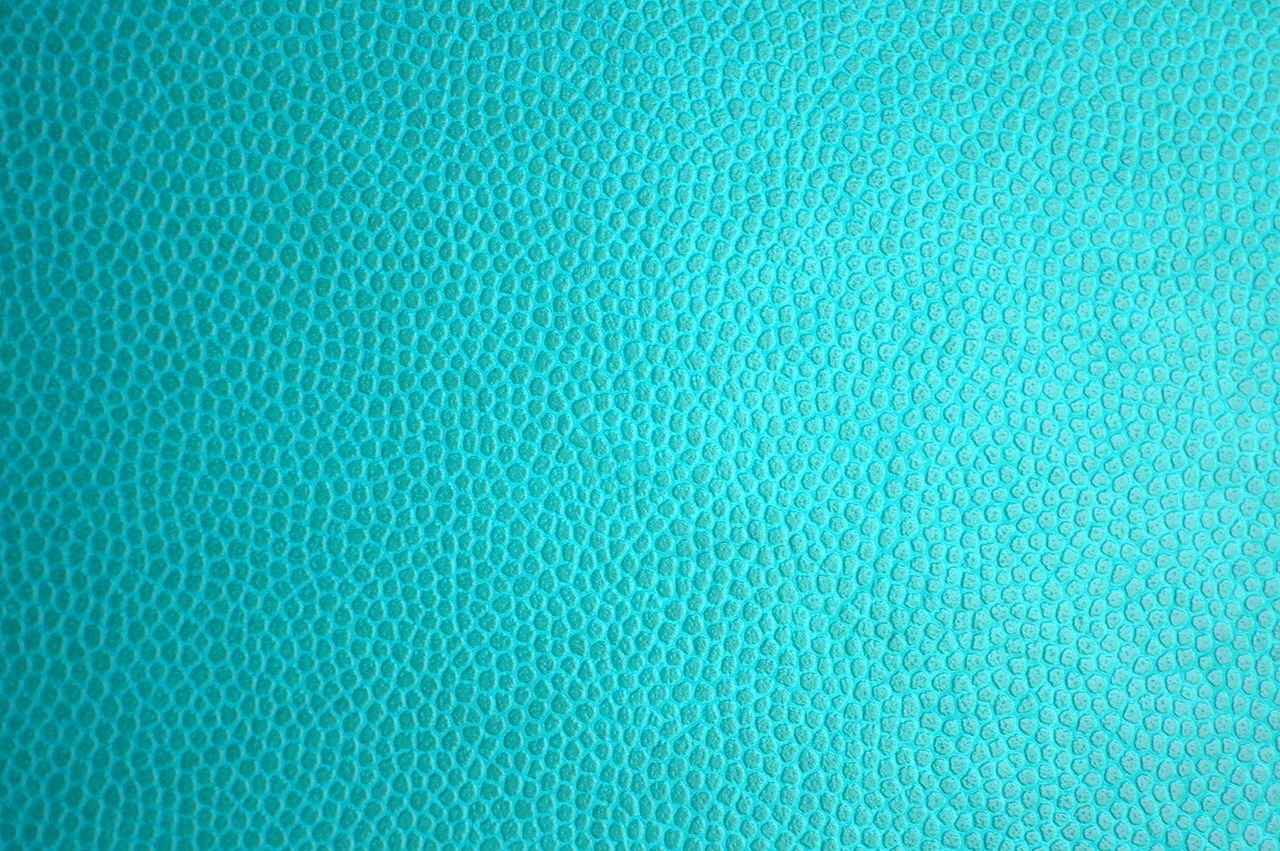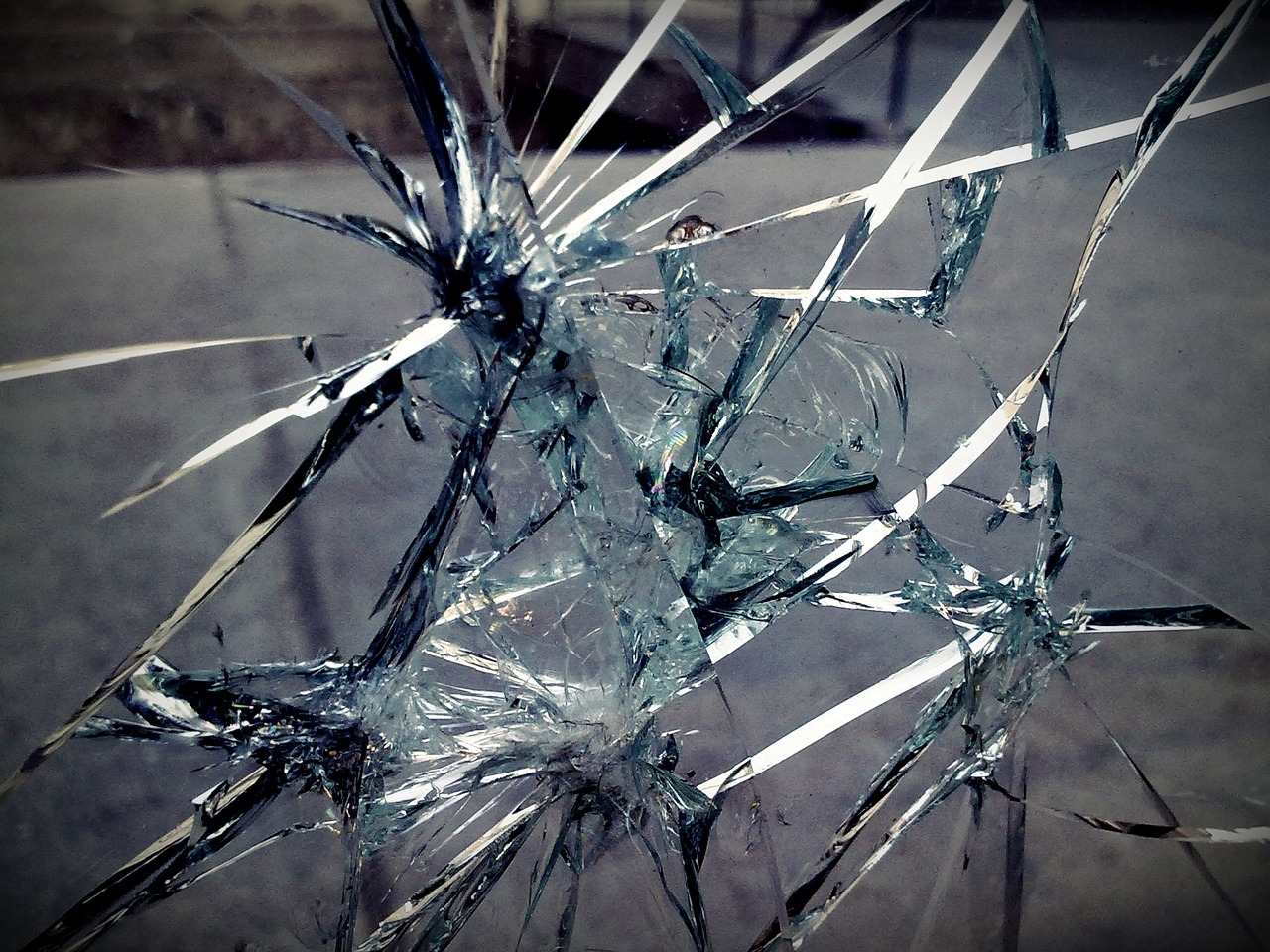This article provides comprehensive insights and expert advice on effectively removing oil stains from leather, ensuring your prized possessions remain in pristine condition. Oil stains can be a common problem for leather items, whether they are shoes, bags, or furniture. Understanding how to treat these stains properly can help maintain the quality and appearance of your leather goods.
Oil stains on leather can originate from various sources. Common culprits include:
- Natural oils from skin contact
- Food oils from spills
- Cosmetic products like lotions and creams
These substances can seep into the leather, leading to unsightly marks that can be challenging to remove.
Before attempting to remove oil stains, proper preparation is essential. This involves:
- Testing cleaning solutions on a hidden area of the leather
- Gathering necessary materials to ensure safe and effective cleaning
Having the right tools can significantly enhance your cleaning efforts. Essential supplies include:
- Soft cloths for gentle cleaning
- Leather cleaner specifically formulated for your type of leather
- Cornstarch or talcum powder for absorbing oil
When selecting a cleaner, opt for a pH-balanced leather cleaner. This ensures that the leather’s integrity is maintained while effectively removing the stain.
Always perform a patch test on a hidden area to prevent potential discoloration or damage to the leather surface.
Various methods can be used to tackle oil stains effectively:
One of the simplest and most effective methods involves using absorbent materials. Applying cornstarch or talcum powder directly onto the stain can help draw out the oil. Leave it on for several hours or overnight before gently brushing it off.
Once the stain is removed, applying a leather conditioner is crucial. This replenishes moisture and maintains the leather’s suppleness, preventing it from drying out and cracking.
While many oil stains can be treated at home, some situations may require professional intervention. Recognizing when to call in experts can save your leather from irreversible damage.
If the oil stain persists after multiple cleaning attempts, it may have penetrated too deeply. In such cases, consulting a professional leather cleaner is advisable for specialized treatment.
Researching and selecting a qualified leather cleaning service is essential. Look for reviews and recommendations to ensure your leather items receive the best care possible.
Preventing oil stains is often easier than removing them. Here are some effective tips:
Establishing a regular cleaning routine can prevent dirt and oils from building up. Use a soft cloth to wipe down leather surfaces regularly to maintain their appearance.
Applying a leather protector creates a barrier against stains. Many products are available that repel oils and other liquids, making your leather items easier to maintain.

What Causes Oil Stains on Leather?
Understanding the origins of oil stains is crucial for selecting the appropriate cleaning method. Oil stains can arise from various sources, including skin oils, food products, and even cosmetics. When these substances come into contact with leather, they can seep into the material, resulting in unsightly marks that can be challenging to remove.
One common source of oil stains is skin contact. Natural oils from our skin can transfer onto leather surfaces, especially in areas where there is frequent contact, such as armrests or seat cushions. These stains can accumulate over time, leading to darkened patches that detract from the leather’s appearance.
Another significant contributor to oil stains is food. Whether it’s a drop of salad dressing, a smear of mayonnaise, or an accidental spill of cooking oil, these substances can penetrate leather quickly. Food oils are particularly problematic because they often contain additional ingredients that can further complicate cleaning efforts.
Additionally, many personal care products such as lotions, creams, and hair products can also lead to oil staining. These products often contain oils and emollients designed to moisturize skin or hair, but when they come into contact with leather, they can leave behind greasy marks that are difficult to remove.
Understanding these sources of oil stains can help you choose the right cleaning method. For instance, if the stain is from a food product, a different approach may be necessary compared to treating a stain caused by skin oils. It’s essential to act quickly when an oil stain occurs, as the longer it sits, the deeper it can penetrate into the leather fibers.
In summary, oil stains on leather can originate from various sources, including skin oils, food products, and personal care items. Recognizing the source of the stain is vital for selecting the most effective cleaning method. By understanding these origins, you can better prepare for the cleaning process and maintain the integrity of your leather items.
To effectively tackle oil stains, it’s advisable to have a few cleaning supplies on hand. Common items include soft cloths, leather cleaner, and absorbent powders like cornstarch or talcum powder. These tools can assist in lifting the oil from the leather surface and minimizing damage.
Furthermore, applying a leather conditioner after cleaning can help restore moisture and prevent the leather from drying out, which can lead to cracking and further damage. Regular maintenance and preventative measures can significantly reduce the risk of oil stains, ensuring your leather remains in excellent condition.

How to Prepare for Cleaning Leather?
Cleaning leather items, especially those with oil stains, requires careful preparation to ensure that the process is effective and safe. Proper preparation not only protects the leather but also enhances the chances of successfully removing the stain without causing further damage.
Before you begin the cleaning process, understanding the importance of preparation is crucial. Proper preparation helps in:
- Preventing Damage: Incorrect cleaning methods can lead to discoloration or deterioration of the leather.
- Enhancing Effectiveness: Using the right materials and methods increases the likelihood of successfully removing the stain.
- Ensuring Safety: Some cleaning solutions can be harmful; testing them beforehand helps avoid adverse reactions.
Before you tackle those oil stains, it’s vital to gather all necessary supplies. Here’s a list of items you may need:
- Soft Cloths: Microfiber cloths are ideal as they are gentle on leather.
- Leather Cleaner: Choose a pH-balanced product specifically designed for leather.
- Absorbent Powders: Cornstarch or talcum powder can help draw out oil from the leather.
- Brush: A soft-bristled brush can help in dusting off debris before cleaning.
Before applying any cleaning solution to your leather, it’s crucial to perform a patch test. Here’s how to do it:
1. Choose a hidden area of the leather item.2. Apply a small amount of the cleaner.3. Wait for a few minutes to observe any discoloration or damage.4. If the leather shows no adverse effects, proceed with the cleaning.
Once you have your supplies ready, it’s time to prepare the leather surface for cleaning:
- Dust Off the Surface: Use a soft cloth or brush to remove any dust or debris.
- Assess the Stain: Determine the size and severity of the oil stain to choose the appropriate cleaning method.
- Conditioning: If the leather appears dry, consider applying a leather conditioner before cleaning to help maintain its suppleness.
Different types of leather require different care methods. Here are some common types:
- Full-Grain Leather: Durable and develops a patina over time; requires gentle cleaning.
- Top-Grain Leather: More processed than full-grain; can be treated with specialized cleaners.
- Suede: A more delicate material; avoid water and use specialized suede cleaners.
By taking the time to prepare adequately, you not only safeguard your leather items but also increase your chances of effectively removing oil stains. Following these steps ensures a smoother cleaning process, preserving the beauty and longevity of your leather possessions.
Gathering the Right Cleaning Supplies
When it comes to maintaining the beauty and longevity of your leather items, is essential. Having the appropriate tools on hand can make a significant difference in effectively removing oil stains and keeping your leather in pristine condition. Below are some key supplies you should consider for your leather care routine.
- Soft Cloths: A collection of soft, lint-free cloths is crucial for cleaning leather surfaces without causing scratches. Microfiber cloths are particularly effective as they are gentle yet absorbent.
- Leather Cleaner: Opt for a pH-balanced leather cleaner specifically designed for your type of leather. This ensures that the cleaner is effective in removing stains while preserving the leather’s natural oils and texture.
- Cornstarch or Talcum Powder: These household items are excellent for absorbing oil stains. When applied to the stain, they draw out the oil, making it easier to clean the leather without damaging it.
- Leather Conditioner: After cleaning, it’s vital to restore moisture to the leather. A good leather conditioner helps maintain suppleness and prevents cracking, ensuring your leather remains soft and durable.
- Brushes: A soft-bristled brush can help in the gentle removal of dirt and dust from the surface before applying any cleaning products.
- Protective Gloves: Wearing gloves while cleaning can prevent oils from your skin from transferring back onto the leather, which can lead to new stains.
Having these supplies readily available not only makes the cleaning process smoother but also enhances the overall care of your leather items. It’s important to remember that prevention is key; regular maintenance can significantly reduce the likelihood of oil stains.
Additionally, before using any product, always perform a patch test on a hidden area of the leather to ensure that it won’t cause discoloration or damage. This precaution is particularly important when trying out new cleaning solutions or conditioners.
In summary, by gathering the right cleaning supplies and utilizing them effectively, you can ensure your leather remains beautiful and well-maintained. Regular cleaning and conditioning will prolong the life of your leather items, keeping them looking their best for years to come.
Choosing the Best Leather Cleaner
When it comes to maintaining the beauty and longevity of your leather items, choosing the right leather cleaner is of utmost importance. A pH-balanced leather cleaner is essential for several reasons. It not only helps in preserving the leather’s natural oils but also ensures that the material remains supple and resistant to cracking. Using a cleaner that is not pH-balanced can lead to a range of issues, including discoloration and damage to the leather’s surface.
The pH level of a cleaner significantly impacts its effectiveness and safety on leather. Leather is a delicate material that can be easily altered by harsh chemicals. A cleaner with a neutral pH level (around 7) is ideal, as it closely resembles the natural state of leather. This balance helps to maintain the integrity of the leather while effectively removing dirt and oil stains.
- Preservation of Leather Quality: A pH-balanced cleaner helps in maintaining the natural oils present in leather, which are crucial for keeping it soft and pliable.
- Effective Stain Removal: These cleaners are formulated to break down and lift oil stains without causing damage, making them effective for regular maintenance.
- Prevention of Discoloration: Using the right cleaner reduces the risk of discoloration, ensuring that your leather items retain their original hue.
When shopping for a leather cleaner, look for products that explicitly state they are pH-balanced. Additionally, consider the following:
- Ingredients: Opt for cleaners that contain natural ingredients and avoid those with harsh chemicals.
- Brand Reputation: Research brands that are well-known for their leather care products, as they often have a history of producing safe and effective cleaners.
- User Reviews: Customer feedback can provide insights into the product’s effectiveness and safety.
To ensure optimal results, follow these steps when using a pH-balanced leather cleaner:
1. Test the cleaner on a small, hidden area of the leather to check for any adverse reactions.2. Apply the cleaner with a soft cloth, using gentle circular motions.3. Allow the cleaner to sit for a few minutes to break down the oil stains.4. Wipe off the cleaner with a clean, damp cloth to remove any residue.5. Dry the leather with a soft towel and allow it to air dry completely.
pH-balanced leather cleaners can be found at various retail locations, including:
- Online Retailers: Websites like Amazon and specialty leather care sites often have a wide selection.
- Local Stores: Check with local shoe repair shops or leather goods stores for recommendations.
- Department Stores: Many department stores carry leather care products in their home or shoe sections.
In summary, selecting a pH-balanced leather cleaner is crucial for maintaining the integrity of your leather items. By understanding the importance of pH balance, you can make informed choices that will help keep your leather looking its best for years to come.
Testing Cleaning Products
is a critical step in maintaining the quality and appearance of your leather items. Before applying any cleaner, it is essential to ensure that the product is safe for use on your leather type. This precaution can prevent potential damage and discoloration, which can be irreversible.
When you are ready to test a cleaning product, follow these steps:
- Select a Hidden Area: Choose a discreet spot on the leather, such as the underside of a flap or an inconspicuous corner. This location will help you assess the cleaner’s effects without compromising the visible areas.
- Apply a Small Amount: Use a cotton swab or a soft cloth to apply a small amount of the cleaner to the hidden area. Make sure to follow the manufacturer’s instructions regarding application methods and quantities.
- Observe for Reactions: Allow the cleaner to sit for a few minutes, then check for any changes in color, texture, or finish. Look for signs of discoloration or damage, such as fading or a sticky residue.
- Evaluate the Results: If the test area shows no adverse effects, you can proceed with confidence to clean the rest of the leather item. However, if you notice any negative changes, it is wise to discontinue using that cleaner and seek alternatives.
Conducting a patch test is not only a precautionary measure but also a way to ensure that your leather remains in pristine condition. Different types of leather may react differently to various cleaning agents, so this step is crucial for all leather care routines.
In addition to patch testing, consider the following tips:
- Research the Cleaner: Look for reviews and recommendations for the specific cleaner you are considering. Check if it is designed for your type of leather, such as suede, nubuck, or smooth leather.
- Check Ingredients: Ensure that the cleaning product is free from harsh chemicals, which can damage leather. Opt for pH-balanced solutions that are gentle yet effective.
- Follow Up with Conditioning: After cleaning, always apply a leather conditioner to restore moisture and maintain flexibility, preventing cracking and drying.
By taking the time to test your cleaning products, you not only protect your investment but also ensure that your leather items continue to look their best for years to come. Remember, the right approach to leather care can make a significant difference in the longevity and appearance of your cherished pieces.
Preparing the Leather Surface for Cleaning
Cleaning leather is an art that requires a gentle approach to maintain its beauty and durability. One of the first steps in this process is preparing the leather surface for cleaning. This ensures that you do not inadvertently damage the leather while trying to restore its appearance.
Before diving into the cleaning process, it’s crucial to understand why preparing the leather is essential. Dust and debris can scratch the surface during cleaning, leading to irreparable damage. By taking the time to prepare the leather, you can avoid these pitfalls and ensure a successful cleaning.
- Dusting Off the Surface: Start by using a soft, dry cloth to gently dust off the leather. This will remove any loose particles that could cause scratches.
- Inspecting for Damage: Check the leather for any existing damage, such as cracks or tears. This will guide your cleaning approach and help you choose appropriate products.
- Testing for Colorfastness: Before applying any cleaning solution, test it on a small, inconspicuous area to ensure it does not discolor the leather.
- Gathering Supplies: Collect all necessary cleaning supplies, including a soft cloth, leather cleaner, and a brush with soft bristles. Having everything on hand will streamline the process.
While preparing your leather, there are several things you should avoid to prevent damage:
- Avoid Harsh Chemicals: Stay away from cleaning products that contain alcohol or ammonia, as these can dry out or damage the leather.
- Do Not Use Excess Water: Leather is porous, and too much water can cause it to warp or stain. Always use a damp cloth rather than soaking the leather.
- Skip the Scrubbing: Never scrub the leather vigorously. Instead, use gentle motions to avoid damaging the surface.
Regular maintenance is key to prolonging the life of your leather items. By incorporating simple steps into your routine, such as dusting and conditioning, you can keep your leather looking its best. Additionally, consider using a leather protector to create a barrier against dirt and oils.
In summary, preparing the leather surface for cleaning is a vital step that should not be overlooked. By following these guidelines, you can ensure that your leather remains in excellent condition, ready to withstand the test of time.

What Are the Best Methods for Removing Oil Stains?
Removing oil stains from leather can be a daunting task, but with the right methods, it can be accomplished effectively. Understanding the various techniques available is essential for selecting the most suitable approach for your leather items. Below, we explore some of the best methods for tackling oil stains, ensuring your leather remains in excellent condition.
Oil stains on leather can arise from various sources, including cooking oils, skin oils, and even hair products. Each type of stain may require a different method for effective removal. Here are some of the best techniques:
One of the simplest and most effective methods for removing oil stains is to use absorbent powders. Cornstarch or talcum powder are excellent choices. Here’s how to use them:
- Sprinkle a generous amount of cornstarch or talcum powder over the oil stain.
- Gently rub the powder into the stain using a soft cloth.
- Allow it to sit for several hours or overnight to absorb the oil.
- Afterward, brush off the powder and check if the stain has diminished.
For more stubborn stains, a specialized leather cleaner may be necessary. These cleaners are formulated to break down oils without damaging the leather. Follow these steps:
- Test the cleaner on a hidden area first to ensure it does not discolor the leather.
- Apply a small amount of leather cleaner to a soft cloth.
- Gently rub the stained area in circular motions.
- Wipe away any excess cleaner with a clean, damp cloth.
A mixture of vinegar and water can also be effective for oil stains. Vinegar acts as a natural degreaser. Here’s how to use it:
- Mix equal parts of vinegar and water in a spray bottle.
- Lightly spritz the stained area, being careful not to saturate the leather.
- Wipe the area with a soft cloth until the stain lifts.
After successfully removing the stain, it’s crucial to apply a leather conditioner. This step restores moisture and flexibility to the leather, preventing it from drying out or cracking. Follow these guidelines:
- Choose a high-quality leather conditioner suitable for your type of leather.
- Apply a small amount to a clean cloth and rub it into the leather in small circles.
- Allow the conditioner to absorb for several hours before using the item.
If the oil stain persists after multiple attempts, it may be time to seek professional assistance. Experts have access to specialized products and techniques that can effectively treat difficult stains without risking damage to the leather.
In conclusion, understanding the best methods for removing oil stains from leather can save your prized possessions from long-term damage. By employing absorbent materials, specialized cleaners, and proper conditioning, you can maintain the beauty and integrity of your leather items.
Using Absorbent Materials
When it comes to tackling oil stains on leather, one of the most effective and accessible methods is the use of absorbent materials. This approach is not only simple but also economical, making it a go-to solution for many leather enthusiasts. In this section, we will explore how to effectively use materials like cornstarch and talcum powder to draw out oil from leather surfaces, thus minimizing the appearance of unsightly stains.
Absorbent materials are designed to soak up excess oils and liquids, making them ideal for treating oil stains on leather. When oil seeps into the porous surface of leather, it can create dark spots that are often difficult to remove. By applying an absorbent material, you can effectively lift the oil from the leather, which not only reduces the stain’s visibility but also helps to maintain the leather’s overall integrity.
- Step 1: Begin by gently blotting the oil stain with a clean, dry cloth. This will help remove any excess oil on the surface.
- Step 2: Generously sprinkle cornstarch or talcum powder directly onto the stain. Ensure that the area is completely covered.
- Step 3: Allow the powder to sit on the stain for several hours, or ideally overnight. This will give the powder enough time to absorb the oil.
- Step 4: After the waiting period, gently brush off the powder using a soft cloth or brush. You may notice that the stain has significantly lightened or disappeared.
- Step 5: If the stain persists, repeat the process until the desired results are achieved.
Utilizing cornstarch or talcum powder offers several advantages:
- Cost-Effective: These household items are inexpensive and readily available.
- Non-Invasive: This method is gentle on leather, reducing the risk of damage compared to harsh chemicals.
- Environmentally Friendly: Both cornstarch and talcum powder are natural substances, making them a safer choice for both your leather and the environment.
While absorbent materials are highly effective, there are a few limitations to keep in mind:
- Deep Stains: If the oil has penetrated deeply into the leather, absorbent materials may not fully eliminate the stain.
- Time-Consuming: The process can take time, especially if multiple applications are needed.
If you find that the oil stain remains after several attempts with absorbent materials, it may be time to consider alternative cleaning methods. Specialized leather cleaners or professional services may be necessary for stubborn stains. Always remember to conduct a patch test when using any new product on leather to avoid discoloration or damage.
In summary, using absorbent materials like cornstarch or talcum powder is a practical and effective method for addressing oil stains on leather. With the right approach, you can restore the beauty of your leather items while ensuring their longevity.
Applying Leather Conditioner After Cleaning
Taking care of leather items is essential for maintaining their beauty and longevity. After successfully removing an oil stain, it is crucial to apply a leather conditioner. This step is not just a recommendation; it is vital for the health of your leather. Below, we will explore why applying a leather conditioner is important, how to choose the right one, and the best practices for application.
Leather, being a natural material, requires moisture to remain supple and flexible. Without proper conditioning, leather can become dry and brittle, leading to cracks and a dull appearance. Here are some key reasons why conditioning is essential:
- Restores Moisture: Leather conditioners are formulated to penetrate the leather fibers, replenishing lost moisture.
- Prevents Cracking: Regular conditioning helps prevent the leather from drying out, which can lead to unsightly cracks.
- Enhances Appearance: Conditioning can restore the leather’s original luster, making it look newer and more vibrant.
Selecting the right leather conditioner is crucial for effective care. Here are some tips to help you make an informed choice:
- Check Ingredients: Look for conditioners that contain natural oils and waxes, as they are less likely to harm the leather.
- Avoid Harsh Chemicals: Stay away from products with alcohol or petroleum-based ingredients, as these can damage the leather.
- Read Reviews: Research and read customer reviews to find a conditioner that has proven effective for others.
Applying leather conditioner is a straightforward process, but following the right steps ensures optimal results:
- Clean the Leather: Before applying conditioner, ensure the leather is clean and free from dust or debris.
- Test in a Hidden Area: Always test the conditioner on a small, inconspicuous area to check for any adverse reactions.
- Apply Evenly: Use a soft cloth to apply the conditioner evenly across the surface. Avoid using too much product, as this can lead to a greasy feel.
- Allow to Absorb: Let the conditioner sit for a few minutes to allow it to penetrate the leather.
- Buff the Surface: After absorption, use a clean cloth to buff the leather, enhancing its shine and appearance.
Frequency of conditioning depends on the usage and environment. As a general guideline:
- Regular Use: For items used frequently, such as bags or shoes, conditioning every 3-6 months is advisable.
- Occasional Use: For less frequently used items, conditioning once a year can suffice.
In conclusion, applying a leather conditioner after cleaning is a necessary step in maintaining the integrity and appearance of leather items. By restoring moisture, preventing cracks, and enhancing the overall look, conditioning helps ensure that your leather remains in excellent condition for years to come. Remember to choose the right products and follow the proper application techniques to achieve the best results.

When to Seek Professional Help?
When it comes to maintaining leather items, understanding the right time to seek professional help can be crucial. While many oil stains can be treated at home with various cleaning methods, there are certain situations where the expertise of a professional is necessary. This knowledge can be a game-changer in preserving the integrity and appearance of your leather goods.
Recognizing the signs that indicate the need for professional intervention is essential for protecting your leather. Here are some key indicators:
- Persistent Stains: If oil stains remain after multiple cleaning attempts, it may be a sign that the oil has penetrated deeply into the leather.
- Discoloration: Noticeable changes in color or texture around the stain can suggest that home remedies are not sufficient.
- Cracking or Dryness: If the leather feels dry or has started to crack, it may require specialized products and techniques that only professionals can provide.
While DIY methods can be effective, they also come with risks. Using the wrong products or techniques can lead to:
- Further Staining: Some cleaning agents can react negatively with leather, causing more harm than good.
- Loss of Natural Oils: Over-cleaning can strip the leather of its natural oils, leading to a dull appearance and increased susceptibility to damage.
- Increased Repair Costs: Attempting to fix severe stains on your own may lead to more extensive damage, resulting in higher repair costs later on.
When seeking professional help, it’s essential to choose a reputable service. Here are some tips:
- Research: Look for reviews and testimonials online to gauge the reliability of the cleaning service.
- Ask About Their Process: Inquire about the cleaning methods and products they use to ensure they are safe for your leather type.
- Check for Certifications: Professional cleaners should have relevant certifications and training in leather care.
When you decide to take your leather to a professional, expect a thorough assessment followed by a tailored cleaning plan. Professionals typically use specialized products and techniques that are not available for home use, ensuring:
- Deep Cleaning: Professionals can effectively remove deep-set stains without damaging the leather.
- Conditioning: They will often condition the leather after cleaning to restore its natural luster and flexibility.
- Expert Advice: Professionals can provide valuable insights on how to maintain your leather items to prevent future damage.
Investing in professional leather cleaning can save you money in the long run. By addressing issues early and effectively, you can prolong the life of your leather items and maintain their value. Remember, leather is a significant investment, and taking the necessary steps to care for it properly is essential.
In conclusion, while home remedies can be effective for minor oil stains, knowing when to seek professional help is vital for the longevity of your leather goods. By recognizing the signs of irreversible damage and choosing a reputable cleaner, you can ensure your leather remains in excellent condition for years to come.
Identifying Irreversible Damage
When it comes to maintaining the beauty of leather items, understanding the nature of oil stains is crucial. Oil stains can arise from various sources, including skin oils, food spills, or even hair products. These stains not only mar the appearance of leather but can also lead to long-term damage if not addressed properly. In this section, we will delve deeper into to leather caused by oil stains.
Recognizing the signs of irreversible damage is essential for any leather owner. Here are some indicators to watch for:
- Discoloration: If the leather has developed a persistent dark spot or a faded area that does not improve with cleaning, it may indicate that the oil has penetrated too deeply.
- Texture Changes: Feel the leather surface. If it feels sticky or unusually rough, the oil may have altered the leather’s texture beyond repair.
- Cracking: Look for cracks or splits in the leather. These often occur when the material dries out due to oil absorption and inadequate care.
If you observe any of the above signs, it is advisable to seek the expertise of a professional leather cleaner. Professionals have access to specialized cleaning solutions and techniques that can address deep-set oil stains without further damaging the leather. Attempting to fix these issues on your own could exacerbate the problem, leading to more significant damage.
When you consult a professional, they will typically follow a systematic approach:
- Assessment: The cleaner will assess the extent of the damage and determine the best course of action.
- Specialized Cleaning: They will use pH-balanced cleaners and industry-specific techniques to treat the leather.
- Conditioning: After cleaning, they may apply a conditioner to restore moisture and flexibility to the leather.
Finding a reputable leather cleaning service is essential for ensuring the best care for your items. Here are some tips to guide your selection:
- Research: Look for local services with a solid reputation. Online reviews and testimonials can provide insight into their quality of service.
- Experience: Choose a cleaner with experience in handling various leather types and conditions.
- Certifications: Check if the service is certified by recognized leather care organizations.
In summary, identifying irreversible damage from oil stains on leather requires careful observation of the material’s condition. If you find that the stains persist despite your best cleaning efforts, consulting a professional is the best course of action. With their expertise, you can potentially restore your leather items to their former glory, ensuring they remain a cherished part of your collection for years to come.
Finding a Reputable Leather Cleaning Service
When it comes to maintaining the beauty and longevity of your leather items, is a crucial step. Leather is a delicate material that requires specialized care, and entrusting it to the right professionals can make all the difference.
Leather cleaning is not just about removing stains; it involves preserving the integrity of the material. A qualified cleaning service understands the unique properties of leather and uses appropriate techniques and products to ensure the best results. Poor cleaning methods can lead to irreversible damage, discoloration, or even cracking of the leather.
Begin your search by asking friends, family, or colleagues for recommendations. Personal experiences can provide valuable insights into the quality of service offered by different providers. Additionally, online platforms such as Google Reviews, Yelp, and social media can help you gather a broader range of opinions.
- Experience and Expertise: Check how long the company has been in business and whether they specialize in leather care.
- Certifications: Look for industry certifications that indicate a commitment to quality and professionalism.
- Customer Reviews: Read reviews and testimonials to gauge customer satisfaction and service quality.
- Cleaning Methods: Inquire about the cleaning methods and products used. Ensure they are safe for your type of leather.
- Insurance and Guarantees: A reputable service should have insurance and offer guarantees for their work.
When reading customer reviews, pay attention to recurring themes. Look for comments about timeliness, quality of work, and customer service. A service with consistently positive feedback is likely to provide a reliable experience.
Before making a decision, consider asking the following questions:
- What specific leather cleaning techniques do you use?
- Can you provide references from previous clients?
- What is your process for handling different types of leather?
- How do you address potential damage during the cleaning process?
- What is your pricing structure, and do you offer estimates?
Once you’ve selected a cleaning service, communicate your specific needs and concerns. Providing details about the type of leather and the nature of the stains will help the professionals tailor their approach. Always make sure to follow up on the service and check the results to ensure they meet your expectations.
In conclusion, investing time in researching and selecting a qualified leather cleaning service can help preserve the beauty and longevity of your leather items. By following these guidelines, you can ensure that your leather receives the best care possible.

How to Prevent Oil Stains on Leather?
When it comes to preserving the beauty and longevity of leather items, preventing oil stains is a crucial step that often outweighs the effort required to remove them. Leather, known for its elegance and durability, can easily fall victim to unsightly oil marks from various sources such as skin, food, and hair products. By implementing a few simple care tips, you can maintain the leather’s appearance and ensure it stands the test of time.
Understanding the significance of preventing oil stains is essential for any leather owner. Oil stains not only mar the visual appeal of leather but can also lead to long-term damage if not addressed promptly. The oils can seep into the leather, causing discoloration and weakening the material over time. Taking proactive measures can save you from costly repairs or replacements.
- Regular Cleaning: Establish a routine for cleaning your leather items. Use a soft, dry cloth to gently wipe away dirt and oils that accumulate on the surface. Regular maintenance helps prevent buildup and keeps the leather looking fresh.
- Using Leather Conditioners: Applying a high-quality leather conditioner every few months can help maintain the leather’s suppleness and create a barrier against stains. Conditioners nourish the leather, making it less prone to absorbing oils.
- Protective Treatments: Consider using a leather protector spray that repels liquids and oils. These products create a protective layer that can significantly reduce the risk of stains.
- Avoiding Contact with Oily Substances: Be mindful of where you place your leather items. Avoid setting them down on surfaces that may have oil residues, such as tables where food is consumed.
Despite your best efforts, accidents can happen. If you spill something oily on your leather, act quickly:
1. Blot the Spill: Use a clean, dry cloth to gently blot the area. Avoid rubbing, as this can spread the oil further.2. Apply Absorbent Powder: Sprinkle cornstarch or talcum powder on the stain to absorb excess oil. Leave it for several hours before brushing it off.3. Clean with Leather Cleaner: If the stain persists, use a pH-balanced leather cleaner to treat the area, following the manufacturer's instructions.
To ensure the longevity of your leather items, be aware of common mistakes:
- Using Harsh Chemicals: Avoid cleaners that contain alcohol or ammonia, as they can dry out and damage the leather.
- Exposing to Direct Sunlight: Prolonged exposure to sunlight can cause fading and drying. Store leather items in a cool, shaded place.
- Neglecting to Test Products: Always test any cleaning or conditioning product on a small, inconspicuous area before full application to avoid discoloration.
After cleaning or treating your leather, it’s essential to continue caring for it properly. Regularly inspect your leather items for signs of wear or damage and address issues promptly. This proactive approach will help you enjoy your leather possessions for years to come.
In summary, preventing oil stains on leather is not only about immediate care but also about adopting a comprehensive maintenance routine. By following these simple yet effective strategies, you can keep your leather looking its best and extend its lifespan significantly.
Regular Cleaning and Maintenance
Maintaining the beauty and longevity of leather items requires a commitment to . Leather, while durable, can be susceptible to dirt and oils that accumulate over time. Establishing a consistent cleaning routine is essential to prevent these substances from causing permanent damage. In this section, we will explore effective strategies to keep your leather looking its best.
Regular cleaning plays a pivotal role in preserving the quality of leather. Over time, dirt, dust, and oils can build up, leading to a dull appearance and potential deterioration. By implementing a cleaning routine, you can:
- Prevent Stains: Frequent cleaning helps remove substances before they can set into the leather.
- Maintain Appearance: Regularly wiping down surfaces keeps leather looking fresh and vibrant.
- Extend Lifespan: Proper care can significantly prolong the life of your leather items.
Creating a cleaning routine doesn’t have to be complicated. Here are some simple steps to follow:
1. Choose a consistent schedule (e.g., weekly or bi-weekly).2. Gather necessary supplies: soft cloths, leather cleaner, and conditioner.3. Start with dusting off surfaces to remove loose debris.4. Apply a leather cleaner with a soft cloth, following the product instructions.5. Wipe down the leather to remove any excess cleaner.6. Finish with a leather conditioner to restore moisture.
Using the right tools and products is crucial for effective cleaning. Here’s a list of recommended supplies:
- Soft Cloths: Microfiber cloths are ideal for cleaning without scratching the surface.
- Leather Cleaner: Opt for a pH-balanced cleaner specifically designed for leather.
- Leather Conditioner: This helps maintain the suppleness and prevent cracking.
- Absorbent Powders: Cornstarch or talcum powder can be used to absorb oil stains.
Different types of leather may require specific care techniques:
- Smooth Leather: Regularly wipe with a damp cloth and follow with a leather conditioner.
- Suede: Use a suede brush to lift dirt and restore texture; avoid water.
- Coated Leather: Clean with a damp cloth and mild soap, then dry thoroughly.
It’s essential to clean leather items not just when they look dirty, but also:
- After exposure to moisture or spills.
- When you notice a change in texture or sheen.
- Seasonally, to prepare for changes in weather conditions.
To further enhance your leather maintenance routine, consider the following:
- Store Properly: Keep leather items in a cool, dry place away from direct sunlight.
- Avoid Excessive Heat: Heat sources can dry out and damage leather.
- Use Protective Sprays: Consider applying a leather protector to create a barrier against stains.
By implementing these cleaning and maintenance strategies, you can ensure that your leather items remain in excellent condition for years to come. Regular care not only enhances the appearance but also safeguards against potential damage, making it a worthwhile investment in your leather goods.
Using Protective Treatments
When it comes to maintaining the beauty and longevity of leather items, is an essential step that shouldn’t be overlooked. These treatments serve as a barrier against various forms of damage, including stains from oils and liquids, ensuring that your leather goods remain in excellent condition over time.
Protective treatments are vital for several reasons:
- Stain Resistance: They create a protective layer that repels substances that could cause stains, such as oils from skin or food.
- Moisture Protection: These treatments help to prevent water damage, which can lead to mold and mildew.
- Longevity: By applying a protective layer, you can significantly extend the life of your leather items.
There are many products on the market designed specifically for leather protection. Here are some popular options:
- Spray Protectors: These are easy to apply and create a waterproof barrier.
- Conditioning Creams: These not only protect but also nourish the leather, keeping it supple.
- Waxes: Waxes provide a strong protective layer and are particularly good for outdoor leather items.
Applying a protective treatment correctly is crucial for optimal results. Follow these steps:
- Clean the Leather: Ensure the leather surface is clean and dry before application. Use a soft cloth and a suitable leather cleaner.
- Test the Product: Always perform a patch test in an inconspicuous area to check for adverse reactions.
- Apply Evenly: Use a soft cloth or sponge to apply the treatment evenly across the surface.
- Allow to Dry: Let the product dry completely before using the leather item to ensure maximum effectiveness.
The frequency of application depends on the type of leather and its exposure to elements. As a general guideline:
- High-Use Items: For bags and shoes that are used daily, consider applying protection every 3-6 months.
- Occasional Items: For items used less frequently, an annual application is usually sufficient.
While protective treatments are beneficial, applying them excessively can lead to buildup, which may affect the leather’s appearance and feel. It’s essential to follow the manufacturer’s instructions and not to overapply.
When selecting a leather protector, consider the following:
- Water-Based Formulas: These are generally safer for leather and less likely to cause damage.
- Non-Toxic Ingredients: Look for products that are free from harsh chemicals, ensuring they are safe for both you and the environment.
- Reputation: Choose brands with positive reviews and a track record of effectiveness.
Incorporating a quality protective treatment into your leather care routine can significantly enhance the appearance and durability of your leather items. By taking proactive measures, you can enjoy your leather goods for years to come, keeping them looking as good as new.
Frequently Asked Questions
- What should I do immediately after an oil stain occurs?
Act quickly! Blot the stain gently with a soft cloth to absorb excess oil. Avoid rubbing, as this can push the oil deeper into the leather.
- Can I use regular household cleaners on leather?
No, it’s best to avoid regular household cleaners. They can damage the leather. Instead, opt for a pH-balanced leather cleaner designed specifically for leather care.
- How long should I leave absorbent materials on the stain?
Leave cornstarch or talcum powder on the stain for at least a few hours, or overnight if possible. This gives it enough time to draw out the oil effectively.
- Is it necessary to apply a leather conditioner after cleaning?
Absolutely! Conditioning replenishes moisture and keeps the leather supple, preventing it from cracking or drying out after cleaning.
- When should I consider professional cleaning services?
If the stain persists after multiple attempts to clean it, or if you’re unsure about the cleaning process, it’s wise to consult a professional. They have specialized tools and products to tackle tough stains.
- How can I prevent future oil stains on my leather items?
Regular maintenance is key! Wipe down your leather items with a soft cloth and consider using a protective treatment to create a barrier against oils and liquids.




